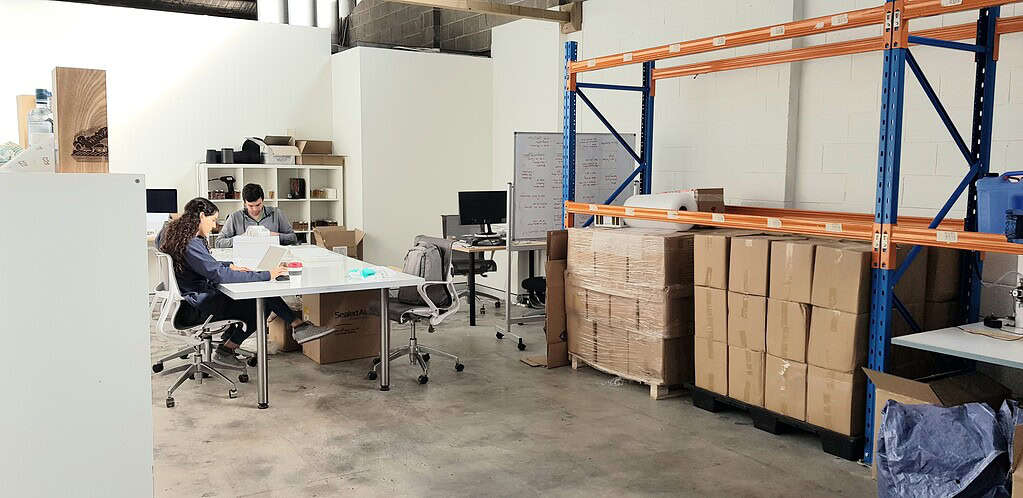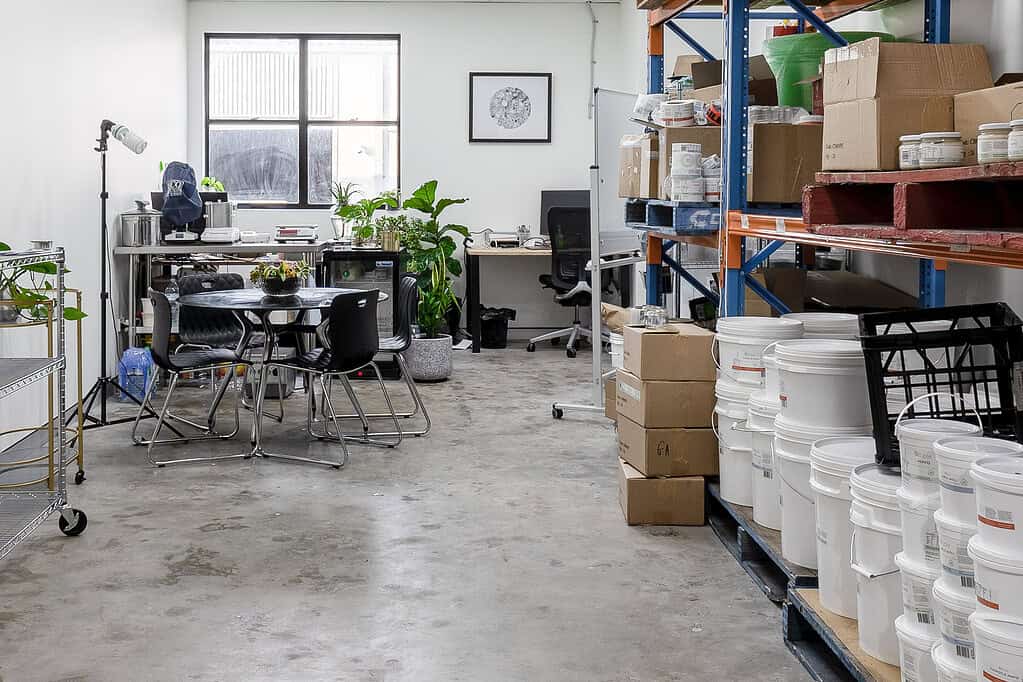Are you an eCommerce business operating from home or a small space? Where do you store your inventory? You don’t need a large warehouse to implement these warehouse design tips. eCommerce business owners admit to storing their stock in their garage, basement or even their living room. When it comes to eCommerce inventory storage, a warehouse provider or storage unit is the way to go. To optimise your warehouse space, first ask yourself:
- How much of my warehouse space is currently being used?
- What is it used for?
Applying warehouse design best practices to your storage space will reduce your overall costs as an online merchant. Keep your customers happy (by shipping the correct item), and save time and money to maintain a well-organised warehouse.
However, optimising your storage and warehouse space is not always at the top of mind for eCommerce business owners. It’s way more exciting to focus on launch parties, social media posts and product photography.
In this post, we’ll help you optimise your eCommerce storage space and ensure your supply chain logistics run smoothly so you can free up more time to grow your online store.
What is an eCommerce storage warehouse?
eCommerce businesses store a lot of physical inventory before stock is sold online. An in-house storage warehouse allows businesses to:
- Securely store products
- Track inventory
- Keep track of quantity on hand
- Prep and pack items once they are ready to be shipped
- And more
Why does warehouse design matter?
A physical warehouse is an additional cost and it’s not an option for many online merchants. Optimising your supply chain is a critical factor to determine how quickly your business grows.
Whether you are managing your inventory inhouse or outsourcing it to a third-party, here are five warehouse design principles to optimise your space right away:
1. Make your priority stock highly accessible

Warehouse design can benefit eCommerce businesses of all sizes. You don’t have to be a large retailer to optimise your warehouse space. Setting up your warehouse design by prioritising your stock is going to help you stay organised and keep your highest priority stock at the forefront. Grab items that need to be shipped out right away without using a fork-lift.
For example, strategically place beams, shelves and containers to reach items that are shipped out most frequently. Set up hang rails on a horizontal axis to push across shelves and access products in the far back. Use a sliding storage compactus to slide shelves left and right. This way, you can easily access items that are located in the back.
BONUS: If you’re looking for a low-cost solution, check out Kmart’s closet organisers to attach onto your ang rails and slide cmpartments along a horizontal axis.
2. Use vertical space in your warehouse design
Source: Catch.com.au
Vertical space is one of the easiest warehouse design principles to put into practice. It is low cost and requires minimal effort. It just needs to be done effectively. Knowing the height of your storage space will help you organise your stock. Put your slowest selling stock at the top and free up more space at the bottom to access products that move quickly. Add shelves and racks where possible and size variations of the same containers so you can easily stack upwards and on top of one another. Think of vertical storage warehouse design like a game of Tetris, where stacking blocks (containers) by similar size and shape that fit on top of one another is the secret to optimising your space in warehouse design.
BONUS: Don’t forget to get rid of obsolete inventory to optimise your warehouse design and storage space. For example, get rid of inventory that hasn’t been picked in over a year. Calculate your average inventory levels and check how often specific SKUs are picked.
3. Optimise your floor space

This one may seem like an obvious one. Your floor space is the most accessible location in your warehouse and is premium real estate. Keeping your floorspace clean and clear is highly important to save time and money in your logistics process. Remove dust, debris and clutter from your floor by throwing out packaging and unused boxes. Also, get rid of dead inventory that is taking up floor space or shelf space. Don’t waste time sorting through slow moving stock on the floor. Use your floor space to create piles of high moving stock that you know will be in-and-out.
Finally, optimise your floorspace by reducing the space between aisles in your warehouse. Downsizing the width between aisles on your floor space and between racks can get you back much-needed square metres. Reduce a metre between your aisles and add more vertical racking to get back some storage space.
4. Outsource supply chain processes where possible
If you are a growing eCommerce business and you’re overflowing with stock and orders, try outsourcing the supply chain process where possible. This could involve outsourcing to a 3PL or 4PL provider. Start by making better use of your warehouse space by repurposing some of your storage space for other areas of your business, like a virtual office station. Outsourcing warehouse and logistics can ensure you only pay for the space you need. It also allows you to dial operations up and down depending on how you’re tracking with inventory. A logistics provider can streamline your eCommerce supply chain and integrate your back office with your online store.
As you grow your business, your sales volume will increase. You will need additional space and staff to manage your fulfillment. If you have exhausted your space and leveraged warehouse design and space management, try outsourcing your supply chain operations. This will free up more time and energy to focus on your business, and less on logistics.
5. Use designated stations to speed up the fulfillment process
The easiest way to optimise your storage space with warehouse design is to create individual, task specific stations. Designated stations for assembly, packaging, and labeling guarantee packages are processed and shipped faster. It keeps your inventory flowing and moving in and out of the door. Not only does it increase efficiency in your operations, it makes it easier to track your progress. Keeping track of distribution will help you stay on top of how many bins, SKUs, shelves and pallets you have on hand and when it needs to get shipped. Creating sections and zones with dedicated stations is a key element of warehouse design. This helps your team stay on track and reduces foot traffic around the space.
Monitor your inventory and track metrics with an analytics tool to optimise your storage space set up. Get real-time tracking on your inventory levels so you can rest assured that you won’t run out of space or stock.
Conclusion
Overall, your eCommerce business will scale and grow quicker if you optimise your warehouse design. Your packages will be shipped faster with better storage allocation and inventory management to create better customer experiences. Get ready to scale up your operations all under one roof.